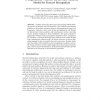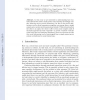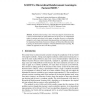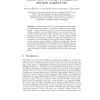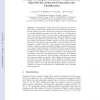COLOGNETWENTE
2009
13 years 10 months ago
2009
SAB
2010
Springer
13 years 10 months ago
2010
Springer
Abstract. Rats and other whiskered mammals are capable of making sophisticated sensory discriminations using tactile signals from their facial whiskers (vibrissae). As part of a pr...
SAB
2010
Springer
13 years 10 months ago
2010
Springer
Abstract. Audition and touch endow spectral processing abilities allowing texture recognition and discrimination. Rat whiskers sensorisystem exhibits, as the cochlea, resonance pro...
SAB
2010
Springer
13 years 10 months ago
2010
Springer
The cerebellum plays a major role in motor control. It is thought to mediate the acquisition of forward and inverse internal models of the bodyenvironment interaction [1]. In this ...
SAB
2010
Springer
13 years 10 months ago
2010
Springer
Abstract. In this work, we are interested in understanding how emotional interactions with a social partner can bootstrap increasingly complex behaviors such as social referencing....
SAB
2010
Springer
13 years 10 months ago
2010
Springer
Reinforcement learning is one of the main adaptive mechanisms that is both well documented in animal behaviour and giving rise to computational studies in animats and robots. In th...
SAB
2010
Springer
13 years 10 months ago
2010
Springer
Prefrontal cortex (PFC) has been implicated in the ability to switch behavioral strategies in response to changes in reward contingencies. A recent experimental study has shown tha...
SAB
2010
Springer
13 years 10 months ago
2010
Springer
Abstract. Neurobiological studies showed the important role of Centeral Pattern Generators for spinal cord in the control and sensory feedback of animals' locomotion. In this ...
IPCO
2010
13 years 10 months ago
2010
We present a branch-and-bound algorithm for minimizing a convex quadratic objective function over integer variables subject to convex constraints. In a given node of the enumerati...
GECCO
2010
Springer
13 years 10 months ago
2010
Springer
We benchmark the Covariance Matrix Adaptation-Evolution Strategy (CMA-ES) algorithm with an Increasing POPulation size (IPOP) restart policy on the BBOB noiseless testbed. The IPO...

